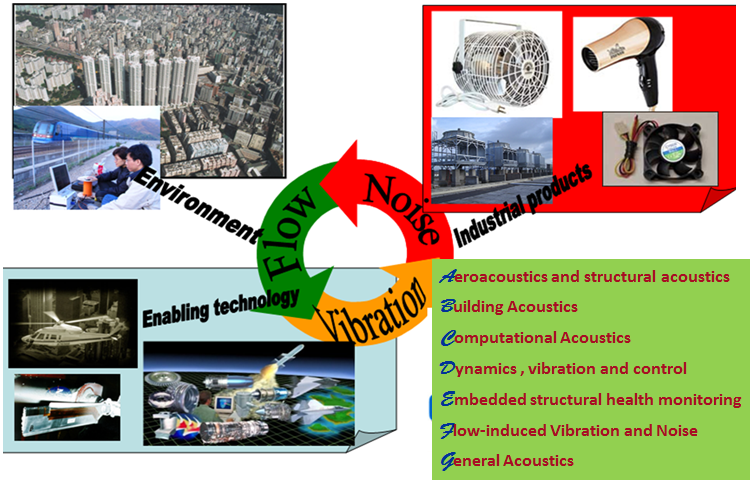The group is under the leadership of Prof. Li Cheng, who is also the director of Consortium for Sound and Vibration Research (CSVR) under ME Department at PolyU. Our research foci focus on Vibration-Noise-Flow interaction problems, the interplay among which provides formidable scientific challenges.

Currently, we are mainly engaged in three research arms pertinent to sound and vibration and germane to environmental and industrial application: Noise and vibration control, structural health monitoring and control of flow induced vibration and noise.
We specialize in a wide range of vibration and noise control problems, especially inside enclosures. The problem is of great application value, exemplified by the cabin noise of passenger vehicles, machinery noise in enclosures, noise in rooms and the payload safety inside launching vehicle in spacecraft etc. Research has been carried out in his research group to develop the enabling technology. Major topics include but not limited to the development of efficient simulation, design and optimization tools; identifications of noise and vibration sources; passive control techniques including damping treatment, vibration isolation, sound absorption and structural modifications; active noise and vibration control including the design of sensor/actuator and controllers. Recent progress in developing micro-perforated panel (MPP) absorbers in complex vibro-acoustic environment offers new alternatives to replace the conventional non-environmental-friendly fibrous and porous materials for sound absorption applications in the design of noise barriers, silencers, acoustic windows and interior noise suppression inside future spacecraft.
Our effort in structural health monitoring focuses on both vibration-based and guided wave-based methods. This is an emerging technology aiming at the on-line diagnosis of damages inside structures during their operation. Successful implementation of SHM allows enhancing the safety and evaluating residual lifetime of structures in service, thus avoiding exorbitant maintenance costs. We are interested in understanding the underlying physics behind structure damage and its interaction with structure waves. Meanwhile, we also develop various damage detection algorithms based on these understandings. Our effort in manipulation structure wave propagation inside structures has also been accentuating recently, with potential application to structural and acoustic wave manipulation and energy harvesting.
We also continue our effort in developing active control technology for suppressing vortex-induced structure vibration and acoustic resonances of bluff bodies in crossflow, the importance of which is unlimited in numerous mechanical, civil or even military applications.
Hope you’ll find this website informative. Feel free to contact us should you need any additional information.










